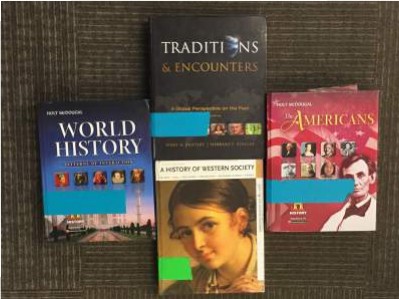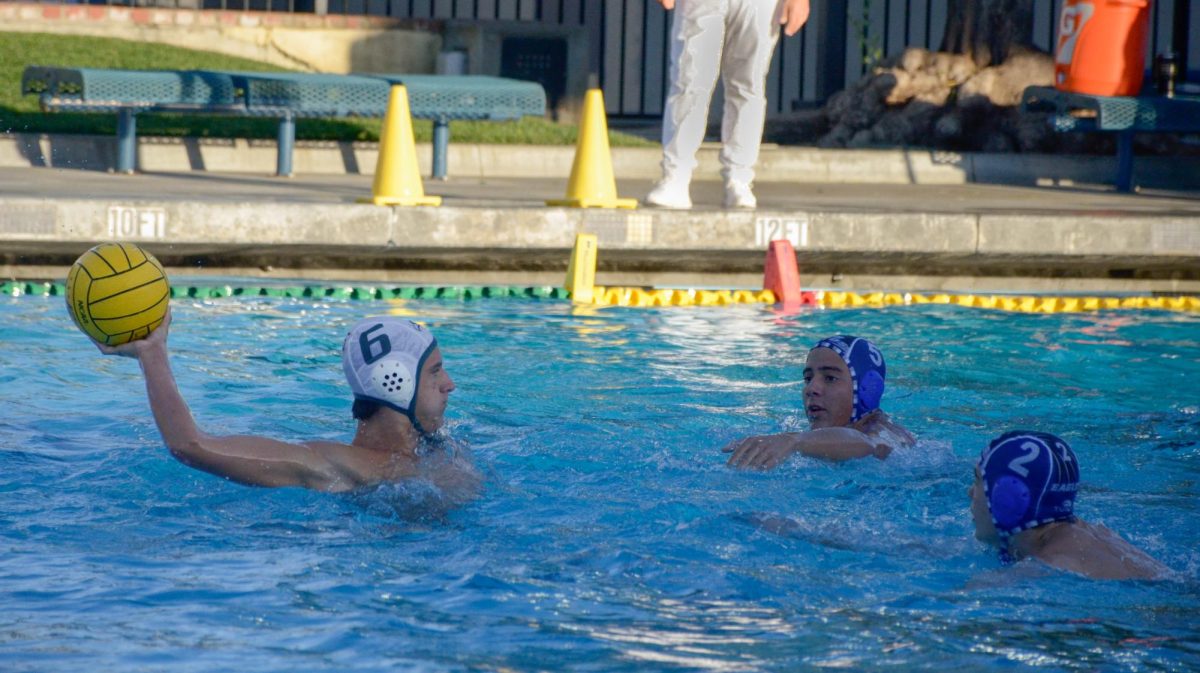History curricula reveal significant Western biases

While history textbooks do cover significant historical events from across all cultures, they often undercover the events considered significant by non-Western cultures and provide greater depth of analysis to Western topics.
February 2, 2016
I’ve never been in a history class that covered the Three Kingdoms War, the Qing conquest of the Ming Dynasty or the Taiping Rebellion in great detail, events that are respectively the third, fifth and sixth bloodiest conflicts ever in human history.
These oversights exemplify the Eurocentric nature of modern history curricula, which often highlights the significance of Western-sourced inventions and the occurrences on Western soil over contributions and events occurring elsewhere. Textbooks often tell the histories of non-Western regions in terms of how they were impacted by or how they affected the West.
Even in world or general history courses, modern Western events and achievements are granted a greater depth of study. I remember reading cogent first-person accounts from primary sources of Western history, while non-Western history seemed to be covered in broad strokes, with the lack of the same specificity in names and coverage of historically significant events within these territories.
The art history textbooks, for instance, indeed contain chapters concerning Western and Eastern art history. But the texts devote huge sections toward covering European art history in minute detail with a chapter per period, and then cover extra-Western art history in catch-all chapters that concern the art of a nation from 1200 to 2000. This deficit — whether purposeful or incidental — proved consistent as I flipped through textbook after textbook of assigned reading for multiple courses.
The Harker course catalog does offer a variety of history courses. Classes specific to European and American history or philosophy abound, however, while the catalog lacks classes specific to the history of nations outside of Europe and North America. Sixty percent of respondents to a Winged Post survey indicated a desire for a course that defied the Eurocentric norm.
On a superficial level, these choices of what to keep and what to discard from the curriculum might just be for the sake of cutting down a course to fit within a semester or a year.
But what the books include tells of value assignments that we Westerners have made, either subconsciously or consciously.
“Those who do not know history are doomed to repeat it.” This adage emphasizes a huge reason why history continues to be studied throughout all levels of school.
But the history of the East differs from that of the West. Non-western cultures merit study of their histories beyond just how Westerners appeared and altered the natives’ lives.
Learning the history of other cultures is useful in making meaningful connections with people from those cultures. Understanding history is thus key to forging relationships, ones as personal as friendship or as significant as a country to country alliance. With a globalized, cosmopolitan world comes the need for an educated populace that looks past its own borders — and biases — in an attempt to make things better.
In short, this is not an issue local to Harker. It involves decisions made by organizations such as the CollegeBoard and its Advanced Placement curriculum. Already AP curricula, like the AP U.S. History curriculum, face revision to avoid whitewashing.
Perhaps a look at world history class curricula, as well as the possibility of non-Western-specific history classes available earlier on in high school may be in order.
This piece was originally published in the pages of the Winged Post on Jan. 27, 2016.
Elisabeth Siegel (12) is the Co-Editor-In-Chief of the Winged Post. This is her fourth year in Journalism, and she especially loves production nights and bonding with the rest of her staff. In previous years, she was Winged Post news editor, copy editor and reporter.


















![“[Building nerf blasters] became this outlet of creativity for me that hasn't been matched by anything else. The process [of] making a build complete to your desire is such a painstakingly difficult process, but I've had to learn from [the skills needed from] soldering to proper painting. There's so many different options for everything, if you think about it, it exists. The best part is [that] if it doesn't exist, you can build it yourself," Ishaan Parate said.](https://harkeraquila.com/wp-content/uploads/2022/08/DSC_8149-900x604.jpg)




![“When I came into high school, I was ready to be a follower. But DECA was a game changer for me. It helped me overcome my fear of public speaking, and it's played such a major role in who I've become today. To be able to successfully lead a chapter of 150 students, an officer team and be one of the upperclassmen I once really admired is something I'm [really] proud of,” Anvitha Tummala ('21) said.](https://harkeraquila.com/wp-content/uploads/2021/07/Screen-Shot-2021-07-25-at-9.50.05-AM-900x594.png)







![“I think getting up in the morning and having a sense of purpose [is exciting]. I think without a certain amount of drive, life is kind of obsolete and mundane, and I think having that every single day is what makes each day unique and kind of makes life exciting,” Neymika Jain (12) said.](https://harkeraquila.com/wp-content/uploads/2017/06/Screen-Shot-2017-06-03-at-4.54.16-PM.png)








![“My slogan is ‘slow feet, don’t eat, and I’m hungry.’ You need to run fast to get where you are–you aren't going to get those championships if you aren't fast,” Angel Cervantes (12) said. “I want to do well in school on my tests and in track and win championships for my team. I live by that, [and] I can do that anywhere: in the classroom or on the field.”](https://harkeraquila.com/wp-content/uploads/2018/06/DSC5146-900x601.jpg)
![“[Volleyball has] taught me how to fall correctly, and another thing it taught is that you don’t have to be the best at something to be good at it. If you just hit the ball in a smart way, then it still scores points and you’re good at it. You could be a background player and still make a much bigger impact on the team than you would think,” Anya Gert (’20) said.](https://harkeraquila.com/wp-content/uploads/2020/06/AnnaGert_JinTuan_HoHPhotoEdited-600x900.jpeg)

![“I'm not nearly there yet, but [my confidence has] definitely been getting better since I was pretty shy and timid coming into Harker my freshman year. I know that there's a lot of people that are really confident in what they do, and I really admire them. Everyone's so driven and that has really pushed me to kind of try to find my own place in high school and be more confident,” Alyssa Huang (’20) said.](https://harkeraquila.com/wp-content/uploads/2020/06/AlyssaHuang_EmilyChen_HoHPhoto-900x749.jpeg)









